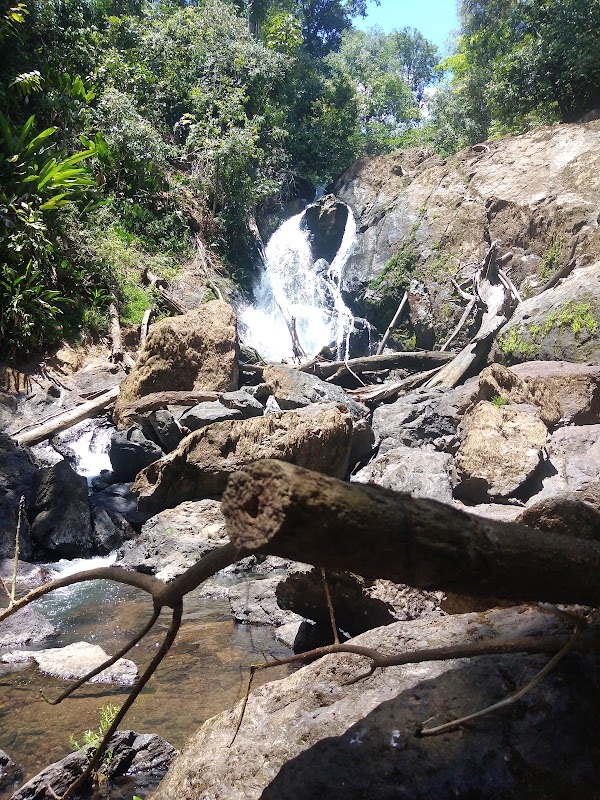Best Coastal and River Adventures Around Drake Bay: Exploring Cano Island and Beyond
Drake Bay is a gateway to some of Costa Rica’s most thrilling coastal and river adventures. From snorkeling vibrant reefs around Cano Island to exploring rivers lined with mangroves, this destination offers hands-on encounters with wild nature. Discover practical tips and insider insights to plan your journey here.
Start Early to Beat Heat and Rain
Begin your hikes and boat trips before 9 AM to avoid the intense midday sun and afternoon tropical showers common in the region.
Bring Waterproof Gear
Waterproof bags and cases protect cameras and electronics from unexpected splashes during river and boat tours.
Wear Proper Footwear
Choose sturdy trail shoes with good grip for the variable terrain on Cano Island and secure water shoes or sandals for river kayaking.
Stay Hydrated and Snack Smart
Pack at least 2 liters of water and portable snacks like nuts or bars to keep your energy steady through active excursions.
Best Coastal and River Adventures Around Drake Bay: Exploring Cano Island and Beyond
Drake Bay, located at the edge of Costa Rica’s Osa Peninsula, pulses with coastal energy and riverine mystery. This area is a launchpad for adventures that bring you face-to-face with the raw interplay of land and sea. Cano Island, a marine jewel just offshore, invites you to slip beneath the waves in search of vibrant coral gardens and playful marine life. Meanwhile, inland rivers challenge you with winding currents and shaded banks alive with wildlife.
Start your journey by booking a boat trip to Cano Island. The ride itself—20 to 30 minutes over waters that shift from glassy calm to teasing chop—offers early views of dolphins and frigatebirds. Once ashore, the island’s steep trails beckon with about 3 kilometers of hiking, climbing roughly 120 meters in elevation. The paths thread through dense tropical forest, where sunlight peeks like a secret through the canopy. Bring sturdy shoes; the terrain shifts from soft earth to rocky outcrops, and occasional roots reach across your path. Plan to spend 3-4 hours exploring—snorkeling gear is essential, as underwater visibility can reach over 30 meters in dry season.
Back on the mainland, the Rio Sierpe and Rio Claro rivers offer paddling and hiking opportunities that contrast the ocean’s pace. These rivers dare you with slow-moving currents, lined by mangroves whose tangled roots seem to clutch the water’s edge. Guided kayak tours reveal how the forest breathes: howler monkeys chatter overhead, scarlet macaws flash through the branches, and caimans slip silently beneath the surface. Expect to cover 6-8 kilometers of river over 2-3 hours. Riverbanks range from muddy to sandy, demanding secure footwear and insect repellent.
Planning your trip requires balancing exhilaration with preparedness. Start early to avoid the midday heat and afternoon showers common from May to November. Hydration is critical—carry at least 2 liters of water and snack bars to maintain energy. Wear lightweight, quick-dry clothing and consider a hat for sun protection. If you’re venturing into river areas, waterproof bags keep essentials dry.
These adventures demand respect. Whether the ocean’s currents push your boat forward or the river’s winding path challenges your paddle, the environment is fiercely itself—unpredictable and alive. Listen to the sounds around you: the splash of water, rustle of leaves, distant bird calls. Each element is an active participant, provoking awareness and care.
From the depth of Cano Island’s reefs to the cool calm of forest-fringed rivers, Drake Bay offers adventures framed by nature’s untamed spirit. These journeys are not about conquering but engaging—a dialogue between traveler and terrain that rewards preparation and humility with unforgettable discovery.
Nearby Trips
All Adventures
Boat Charters
Water Activities
Adventures near Puerto Jiménez
Discover the unique and memorable adventures that make Puerto Jiménez special.
Frequently Asked Questions
How difficult is the hike on Cano Island?
The hike is moderate with about 3 kilometers and 120 meters of elevation gain. Trails include earthy paths and rocky sections that require good footwear and a steady pace.
Are snorkeling tours available year-round?
Yes, but the best visibility is during dry season (December-April). Wet season can bring murkier waters and stronger currents.
Can I kayak the rivers on my own?
While it’s possible, guided tours are recommended due to challenging currents, mangrove navigation, and wildlife safety considerations.
What wildlife might I see around Drake Bay?
Expect howler monkeys, scarlet macaws, dolphins offshore, caimans in rivers, and a variety of colorful tropical fish.
Is there cell service in Drake Bay and on Cano Island?
Cell service is limited around Drake Bay, and nearly nonexistent on Cano Island, so plan accordingly and inform guides of your itinerary.
Are there less crowded spots for photography on Cano Island?
Yes, the northern beach and the lookout near the summit see fewer visitors and offer unobstructed views perfect for sunrise and sunset shots.
Recommended Gear
Sturdy Trail Shoes
Supports ankles on rocky and uneven terrain during island hikes.
Waterproof Dry Bags
Protects valuables from water during boat and river excursions.
Snorkeling Equipment
Necessary to fully explore Cano Island’s underwater coral reefs.
Insect Repellent
Keeps mosquitoes and other biting insects at bay especially during river tours.
Local Insights
Hidden Gems
- "Northern beach of Cano Island, quiet with crystal-clear water"
- "Mangrove tunnels near Rio Sierpe, rich in biodiversity"
Wildlife
- "Howler monkeys that announce dawn and dusk with deep calls"
- "Scarlet macaws flying overhead in vibrant flocks"
- "River caimans keeping silent watch beneath mangrove roots"
History
"Drake Bay is named after Sir Francis Drake, who reputedly used the bay as a hideout. The broader Osa Peninsula was historically explored for gold and exotic timber, yet remains largely wild today."

